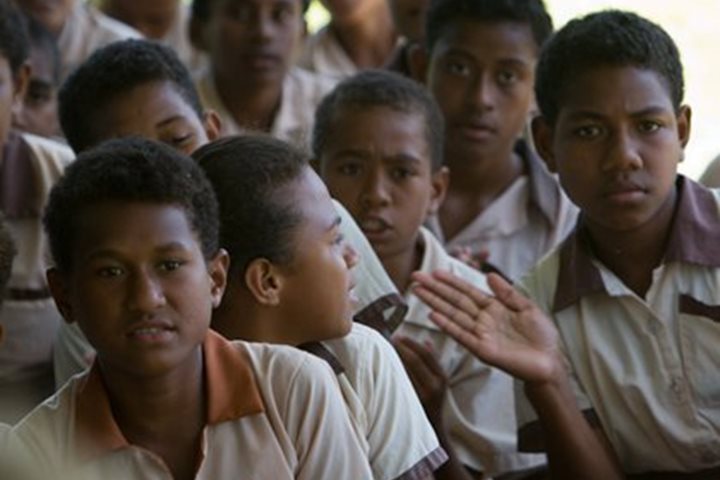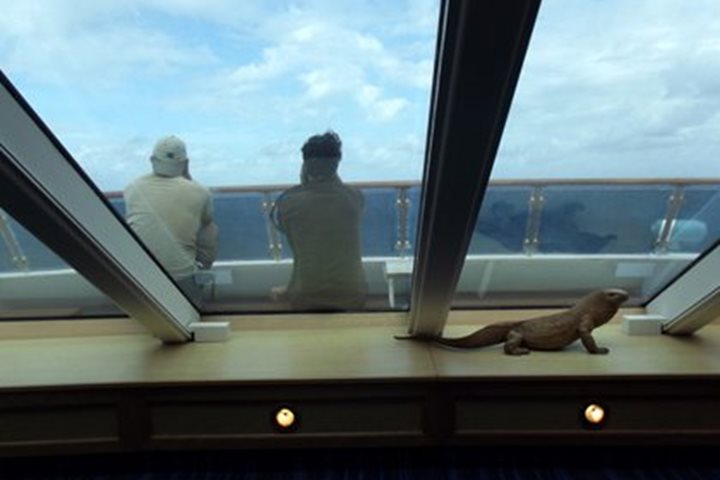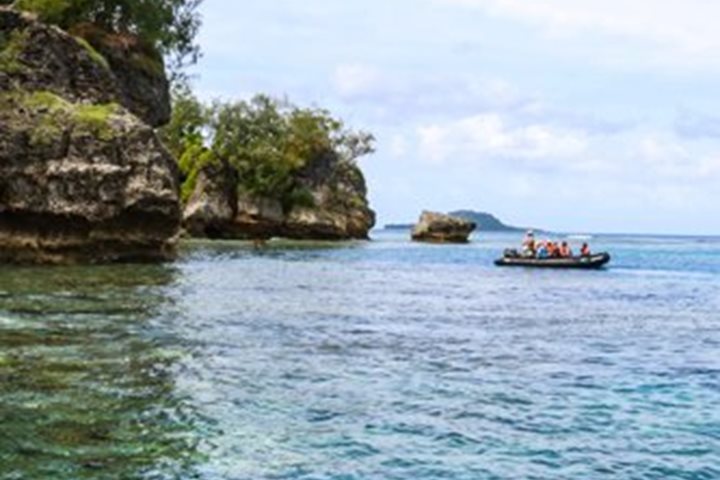This morning the National Geographic Orion arrives offshore at Samarai Island in the China Strait along the southeast coast of Papua New Guinea. Once a prosperous trading and administrative center for the territorial capital of the Milne Bay Province, Samarai Island is now a sleepy fishing and farming community. And sleepy it is on this Sunday morning.
It’s a rare dry landing on an old wharf, not far from where the SCUBA divers enjoy a fascinating dive among submerged pilings. As is customary in this remote and exotic part of the world, a welcome dance greets us as we come ashore. Near the landing a marketplace is set up, with many fine carvings and woven items. Papua New Guinea is renowned for its art, and the collectors among us are in heaven.
To our surprise, an outdoor church service is organized and we are invited, so we all gather in the center of town under the big tree near the primary school. Following the service a dance group treats us to traditional dances. After the show the dancers are happy to pose for pictures and there’s still time to explore the island, birding and making photos of the old buildings and local people.
Walking the overgrown streets of town we find there are no cars or motorized traffic. It’s a pleasant relief from our own busy lives and the noisy streets of modern cities back home. Here time stands still, and everyone is either walking or riding bicycles. The local people are shy but welcoming, even adopting some of us and becoming our private guides. The people already seem like friends as we bid them farewell.
Making the most of the calm conditions and sunny weather, the ship sails a short distance across the bay to Deka Deka Island to explore the underwater world. Here we take to the water, and the glass-bottom Zodiac is deployed for those wishing to stay dry. The fringing reef is alive with a great variety of coral and small schools of colorful tropical fish.
After the full morning, we are back on board in time for a late lunch as we set sail for the Solomon Islands.









